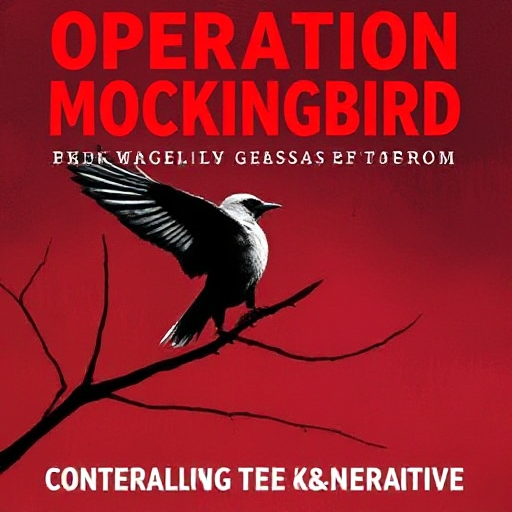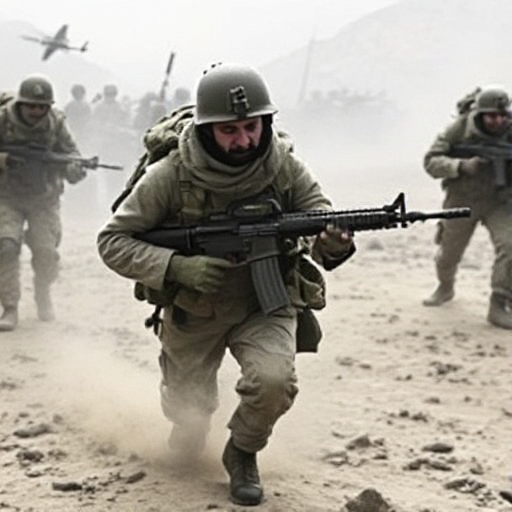
The CIA’s covert operations have been instrumental in shaping world events, often in ways hidden from public view. Founded in 1947, the agency’s mandate includes gathering intelligence and conducting clandestine missions to protect American interests. However, many covert CIA projects have sparked controversy, raising questions about ethics, transparency, and hidden political agendas. When classified missions are exposed, they reveal the extent of government power wielded behind closed doors, often with lasting consequences for nations and people around the globe.
This comprehensive exploration examines six examples of covert CIA activities revealed over the years. These missions demonstrate the agency’s influence on history and the complex moral questions tied to its secret actions.
1. Project MKUltra: The Dark Side of Mind Control
Project MKUltra remains one of the most notorious covert CIA projects. Initiated in the 1950s, it was a secret program designed to explore mind control techniques using psychological experiments and chemical substances, including LSD. The project sought to develop methods for interrogation, behavior modification, and brainwashing, with applications in Cold War espionage.
Many of the experiments were conducted without the consent of participants, who ranged from military personnel to psychiatric patients. Sensory deprivation, electroshock therapy, and drug-induced psychosis were just some of the inhumane methods employed. Covert CIA operations exposed by the Church Committee in the 1970s revealed these violations, leading to widespread condemnation. The scandal prompted reforms in government oversight, but it also cemented public mistrust in intelligence agencies.
The impact of this covert CIA project was profound. MKUltra highlighted how secrecy can justify the abuses of power and reinforced fears about the ethical boundaries intelligence agencies are willing to cross in pursuit of national security.

2. Operation Ajax: The Coup That Changed the Middle East
In 1953, Iran’s democratically elected Prime Minister, Mohammad Mossadegh, nationalized the country’s oil industry, threatening Western economic interests. In response, the CIA and British intelligence orchestrated Operation Ajax, a covert mission to overthrow Mossadegh and install a pro-Western leader, Shah Mohammad Reza Pahlavi.
This mission involved bribing Iranian officials, spreading propaganda, and organizing protests to create political chaos. The coup succeeded, but the hidden truths about Covert CIA Projects missions like this one had lasting repercussions. The Shah’s authoritarian rule led to widespread repression, and growing anti-American sentiment culminated in the 1979 Iranian Revolution.
Operation Ajax is a defining example of how CIA secret projects and their impact extend beyond immediate outcomes, shaping decades of geopolitical tension. It also illustrates the dangers of prioritizing short-term strategic gains over long-term regional stability.
3. Operation Mockingbird: Controlling the Narrative
During the Cold War, the CIA launched Operation Mockingbird, a covert initiative to influence domestic and international media. The agency recruited prominent journalists and infiltrated major news organizations to shape public perception and promote pro-American propaganda. By controlling information flow, the CIA aimed to counter communist influence and sway public opinion in favor of U.S. foreign policy.
The exposure of Operation Mockingbird in the 1970s revealed the extent of behavioral manipulation through media. Covert CIA Projects operations exposed in this context challenged the concept of a free press, raising ethical concerns about government influence on journalism. While the program officially ended, suspicions about media manipulation persist, with critics questioning whether modern media still serves as a tool for state propaganda.

4. The Bay of Pigs Invasion: A Failed Attempt to Topple Castro
One of the most infamous failures in CIA history, the Bay of Pigs Invasion in 1961 was a covert mission to overthrow Cuban leader Fidel Castro. The agency trained and armed Cuban exiles to stage an invasion, hoping to spark an uprising that would topple the communist regime.
The operation was poorly executed, facing logistical issues, underestimated resistance, and inadequate support from the U.S. military. Castro’s forces quickly defeated the invaders, embarrassing the Kennedy administration and solidifying Cuba’s alignment with the Soviet Union, Covert CIA Projects.
Theories about CIA’s hidden agendas surrounding the Bay of Pigs suggest deeper motives tied to Cold War rivalry. The failed invasion intensified tensions that led to the Cuban Missile Crisis and highlighted the risks of poorly planned covert operations driven by ideological fervor rather than strategic soundness, Covert CIA Projects.
5. Operation Northwoods: False Flags and Fabricated Attacks
In the early 1960s, the Joint Chiefs of Staff proposed Operation Northwoods, a plan that would have involved staging fake attacks on American civilians and military installations, blaming them on Cuba to justify military intervention. The plan, which included scenarios like sinking refugee boats and orchestrating bombings, was approved by top military leaders but ultimately rejected by President Kennedy, Covert CIA Projects.
While Operation Northwoods was never implemented, its declassification has fueled theories about CIA’s hidden agendas and the use of false flag operations to manipulate public opinion. The very existence of such a plan demonstrates how far intelligence and military agencies were willing to go to achieve geopolitical objectives during the Cold War, Covert CIA Projects.
6. Operation Cyclone: Arming the Afghan Mujahideen
Operation Cyclone was one of the longest and most expensive covert CIA missions. Launched in 1979, it involved funding and arming Afghan mujahideen fighters to resist the Soviet invasion of Afghanistan. Billions of dollars in weapons and training were provided to various factions, some of which later became the Taliban and al-Qaeda, Covert CIA Projects.
While Operation Cyclone contributed to the Soviet Union’s eventual withdrawal, it also had unintended consequences that continue to affect global security. The impact of covert CIA operations in this case illustrates the double-edged nature of proxy wars, where short-term victories can lead to long-term instability and blowback.

The Legacy of Covert CIA Projects
The history of covert CIA projects reveals a complex and often troubling relationship between secrecy, power, and ethics. While the agency’s missions are designed to protect national interests, their exposure raises critical questions about accountability, transparency, and the unintended consequences of clandestine actions. From mind control experiments to political coups, these projects have shaped global history, sometimes with catastrophic results. Understanding these missions allows for a deeper reflection on the balance between national security and democratic oversight, Covert CIA Projects.
If you want to read more: CLICK HERE
